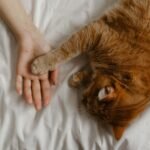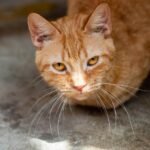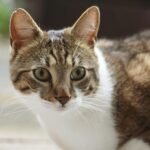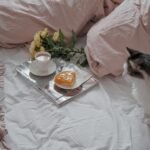Have you ever gazed into your cat’s eyes and wondered what’s truly going on inside that mysterious feline mind? Cats are masters of subtlety, hiding their feelings behind flicks of the tail, gentle purrs, or even a sudden swat. While dogs parade their emotions out in the open, cats weave theirs into mesmerizing patterns, waiting for only the most attentive to decode. For every cat lover, understanding these hidden emotional cues means unlocking a deeper bond, preventing misunderstandings, and often catching a silent cry for help before it’s too late. Let’s journey together into the fascinating world of feline feelings and learn how to read the stories they tell us—one twitch, trill, and tail flick at a time.
The Language of the Tail: Decoding Emotional Signals

A cat’s tail is more than just a balancing stick—it’s an emotional barometer. When your cat holds its tail high with a gentle curve at the tip, it’s a sign of confidence and happiness, almost like a child skipping along with joy. A rapidly flicking tail, however, signals agitation or irritation, warning you to tread carefully. If the tail puffs up like a bottle brush, your cat is likely startled or feels threatened, trying to appear bigger and scarier. Sometimes, a low-held or tucked tail indicates fear, anxiety, or submission, much like a person slouching when unsure. By watching for these patterns, you can sense whether your cat craves attention, space, or reassurance. Even subtle movements, like a slow sway or gentle twitch, can reveal your cat’s mood swings, helping you avoid sudden upsets or misunderstandings. With attention to detail, the tail becomes a roadmap to your cat’s emotional world.
Eyes that Speak: Blinks, Stares, and Gaze Direction

A cat’s eyes are windows into its soul, revealing emotions that words never could. Slow blinking from your cat is often a sign of trust and affection; it’s their way of saying, “I feel safe with you.” If you return the slow blink, you’re engaging in a silent conversation of love and reassurance. Wide, dilated pupils can indicate excitement, fear, or aggression, depending on the context—think of a child’s eyes widening in surprise or dread. Prolonged, unblinking stares, on the other hand, can be confrontational or show dominance, especially between two cats. When your cat avoids your gaze or blinks rapidly, it might be feeling anxious, submissive, or overwhelmed. The direction of your cat’s gaze also matters—watching you intently as you prepare food shows anticipation, while glancing away during petting might mean they’re ready for a break. By observing these eye patterns, you become fluent in your cat’s silent yet profoundly expressive language.
Vocal Clues: Understanding Meows, Purrs, and Trills

Cats may not speak our language, but their vocal repertoire is surprisingly rich and varied. Meowing is often a direct way for cats to communicate with humans, with the tone and pitch providing clues to their mood—short, high-pitched meows usually express excitement, while drawn-out or low-pitched meows can signal annoyance or distress. Purring is commonly associated with contentment, but it can also be a way for cats to self-soothe when in pain or stressed, much like humming a favorite tune to calm yourself. Trills and chirps are typically friendly greetings or invitations to follow, a cat’s way of saying, “Come with me, I have something to show you!” Hissing and growling, on the other hand, are unmistakable warning signs that a cat feels threatened or defensive. Each vocalization, whether soft or sharp, is a puzzle piece in the bigger picture of your cat’s emotional landscape. By tuning in to these sounds and their context, you learn to respond with empathy and care.
Body Posture: Reading Tension, Relaxation, and Readiness

A cat’s body posture is like an ever-changing sculpture, shifting to reflect inner feelings. An arched back with fur standing on end is a classic sign of fear or aggression, while a relaxed, sprawling posture signals comfort and trust. When your cat crouches low with ears flattened, it’s likely feeling threatened or anxious, reminiscent of someone ducking for cover. A confident cat often strolls with its chest out and tail high, fully at ease in its territory. If your cat sits upright with paws tucked underneath, it’s in a state of relaxed readiness, content but alert to its surroundings. Sudden freezing or stiffening of the body can indicate suspicion or fear, as if your cat is weighing its next move carefully. Each pose, from the proud stretch to the subtle crouch, paints a vivid picture of your cat’s emotional state. Paying attention to these physical cues helps you create a safer, more understanding environment for your pet.
Ears as Emotional Antennae: Tracking Mood and Attention

A cat’s ears act like finely tuned radar, swiveling to capture sounds and emotions alike. Forward-facing ears typically indicate curiosity or contentment, especially when paired with a relaxed body. When your cat’s ears flatten sideways or backward, it’s a clear sign of fear, agitation, or even aggression—similar to a person covering their ears during loud noises. Ears that twitch or swivel rapidly show heightened alertness, as your cat processes various stimuli in the environment. Sometimes, one ear forward and one back can mean your cat is uncertain or conflicted, weighing its next move. If your cat’s ears remain still and upright, it’s likely feeling calm and secure, enjoying the moment without worry. These ear movements, though subtle, offer a real-time display of your cat’s mood shifts and focus, letting you adjust your interactions accordingly. Like reading the wind, following your cat’s ears can keep you in tune with their emotions.
Grooming Habits: Signs of Stress or Contentment

Grooming is more than just a cleanliness routine for cats—it’s deeply tied to their emotional well-being. A cat that grooms itself frequently and calmly is usually content, using the ritual as a form of self-care and relaxation. However, excessive grooming, to the point of bald spots or irritated skin, can signal stress, anxiety, or even medical issues, much like humans biting their nails when nervous. On the flip side, a sudden lack of grooming might indicate that a cat is feeling unwell, depressed, or physically unable to care for itself. Cats may also groom each other or their humans as a gesture of affection and social bonding, reinforcing trust within their “family.” Over-grooming after stressful events, like a loud noise or a visit to the vet, is a common way for cats to calm themselves. By keeping an eye on your cat’s grooming patterns, you can catch emotional shifts early and offer comfort or seek help if needed.
Social Interactions: Seeking Solitude or Companionship

Cats are often labeled as solitary creatures, but their social behaviors reveal a rich tapestry of emotional needs. A cat that seeks out your company, curling up beside you or following you from room to room, is expressing affection and a desire for closeness. Head-butting, rubbing against your legs, or “kneading” with their paws are all gestures of trust and love, reminiscent of a child seeking comfort from a parent. Conversely, a cat retreating to a quiet corner or hiding under furniture may be signaling stress, fear, or simply a need for solitude—much like anyone needing a break after a long day. Sudden changes in social behavior, such as increased clinginess or withdrawal, can also be a sign of emotional distress or illness. Playful interactions, such as bringing you toys or engaging in gentle wrestling, are invitations to bond and share in their joy. Understanding your cat’s unique social patterns helps you respond with patience and empathy, strengthening your relationship and ensuring their emotional well-being.

Linnea is a born and bred Swede but spends as much time as possible in Cape Town, South Africa. This is mainly due to Cape Town’s extraordinary scenery, wildlife, and atmosphere (in other words, because Cape Town is heaven on earth.) That being said, Sweden’s majestic forests forever hold a special place in her heart. Linnea spends as much time as she can close to the ocean collecting sea shells or in the park admiring puppies.






